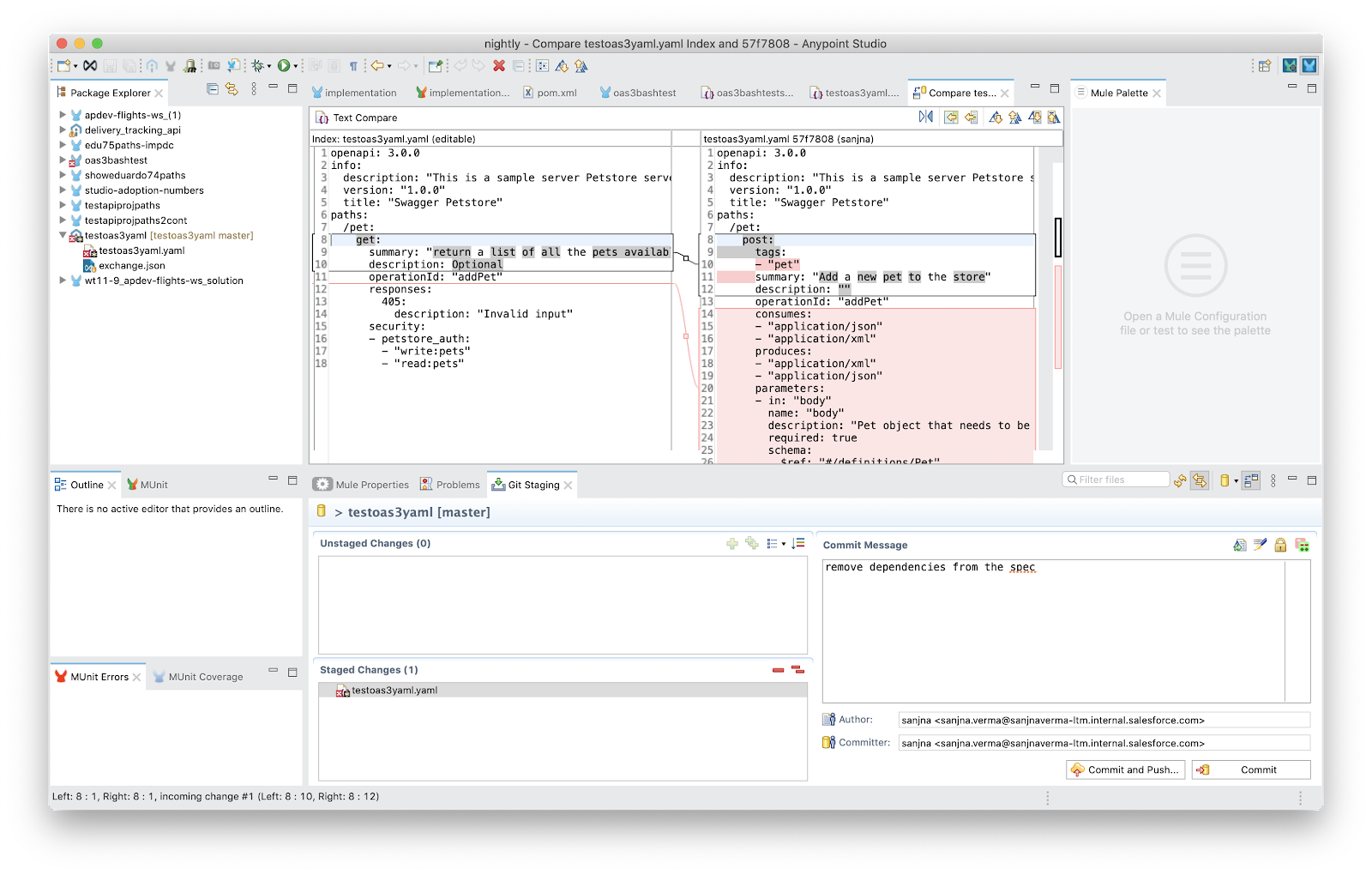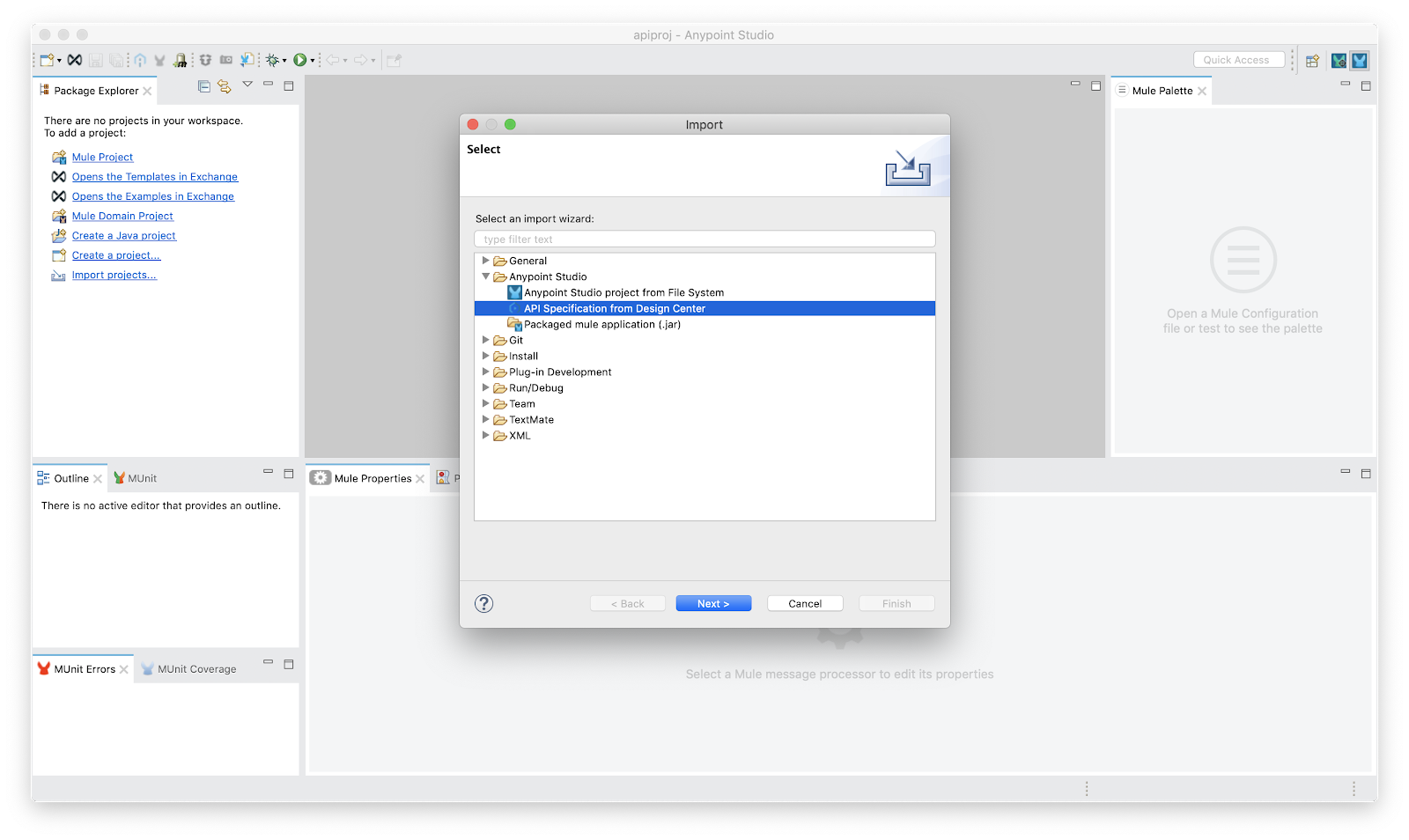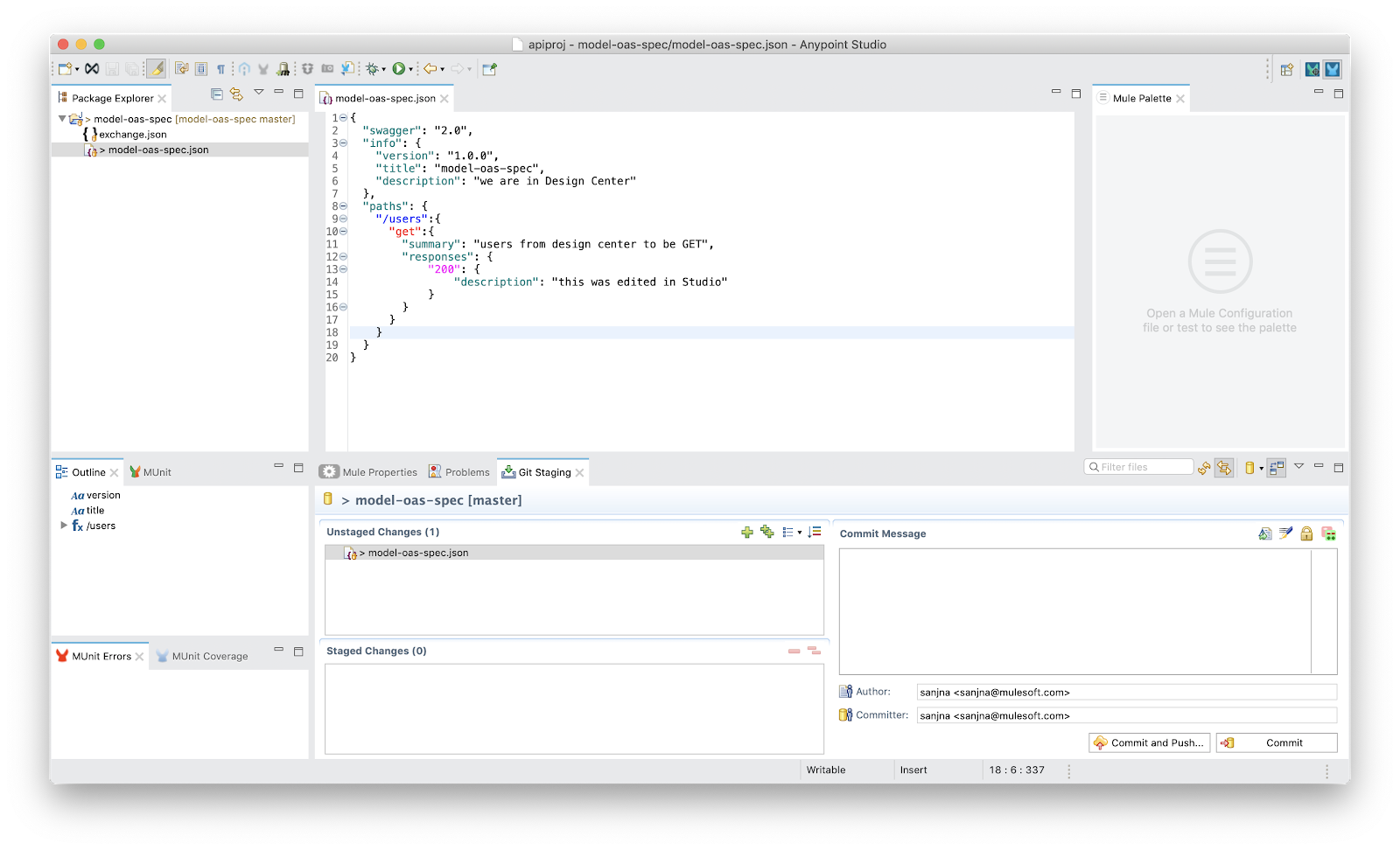The biggest priority for our tooling continues to be ensuring developer productivity with Mule 4 and Anypoint Studio. However, developer productivity doesn’t apply to just the individual developer, it also applies to teams of developers. With our recent releases, our focus has been to bridge the critical gaps faced by development teams. Today, we are excited to share the new features that come with Studio 7.5 and 7.6, including the ability to collaborate on API specifications with your teammates.
Editing specifications offline and online
Users can flexibly edit RAML, OAS 2.0, and OAS 3.0 API specifications within Studio and merge changes online to Anypoint Platform. Users can import API specifications from the platform (an online activity), and then work on the API specification in Studio (an offline activity), complete with the ability to save locally, track changes, synchronize then publish or deploy. This collaborative functionality is largely made possible by a unified, native Git interface that sits in Anypoint Platform. Users can check for updates to their API specifications, and update the specification or the scaffolding as desired.

Solving for multiple sources of truth
Since the release of Studio 7.4, Studio makes use of connecting to Anypoint Platform for a central source of truth for different asset types. In November, we introduced the ability to import published assets — like API specifications — that are released versions as project dependencies from Exchange. This way, project dependencies like API specifications or connectors, can be updated dynamically without requiring massive application re-writes.
With Studio 7.5, we brought the same thought process to considering assets that are “drafts” in the development process, specifically API specification drafts. Users can now import both RAML and OAS specifications from Design Center as linked dependencies into Studio. Now users can edit the specifications in Studio, synchronize changes back to Design Center, or publish them as release versions from Studio to Exchange.

Supporting multiple developer roles and requirements
What really makes us excited about these releases is the flexibility it offers users. API specifications can be developed in Design Center (API Designer) or edited in Studio prior to API implementation. For API designers who prefer a web UI, they can iterate on their specification in Design Center (API Designer). Or, for API designers or implementers who prefer a desktop IDE, they can import API specifications that are still draft assets from Design Center (API Designer) into Studio.

Get started!
With this release, users can collaborate on the development of APIs at design time. This bridges the crucial divide that often prevents parallel development in the API lifecycle from happening. Download the new version of Studio to get started or read the documentation to learn more.








